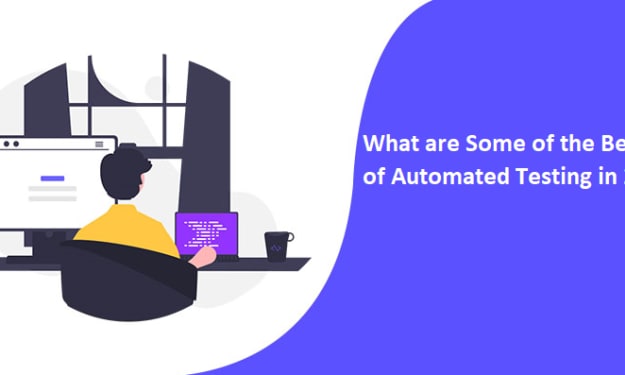How To Become A Web Developer In 2021
Web Developers

Website development services are high in-demand as they are required by most businesses, regardless of the size and industry, to be able to cater their services to a vast audience. If you are interested in getting into this field, you don’t have to necessarily have a computer engineering degree (although having one would be great).
If you are starting from scratch, you need to develop your programming skills first and then start creating projects. But should you start learning all the programming languages and frameworks that are required for Software as a Service or SaaS Software Development at once? Not really.
Deciding The Technology Stack
The technology stack you choose must be relevant in the coming years to ensure job security. For understanding, do your research, that is, look at the latest job postings for web developers and see what skills are most in-demand. What are the skills that are considered a huge asset for providing top-level website development services? Look at annual surveys and reports by companies like Stack Overflow to understand what technologies are being used the most. These technologies will have the best resources to rely on if you ever get stuck as the developer community backing them is huge.
You need to follow a systematic approach, learn the right topics, and aim for working in the best web development company. Generally, the front-end, that is, what the viewers see when they visit a website, is developed using HTML, CSS, Javascript, and jQuery. LAMP (Linux operating system, Apache Server, MySQL DBMS, and PHP or sometimes Python/Perl ) stack was used for the backend, the part accessible to only developers to control what users view on the front-end and manipulate/store data in the previous days. But now, demand for MERN/MEAN (MongoDB, Express, React, Node/ MongoDB, Express, Angular, Node) stack is high. You will be called a web developer if you specialize in some of these technologies. If you know both the front-end and backend technologies, you become a full-stack developer.
Web Technologies
A web developer must have good problem-solving skills. There will be times when you won’t know how to start. Break the problem down and try to solve the sub-problems individually first. Descriptions of the technologies generally used by a web development service provider are discussed next.
1. HTML: HTM5 is a hypertext markup language used for building the basic web page structure. Focus more on learning the most used semantic tags and use them often instead of trying to memorize them all at once.
2. CSS: CSS3 code helps in styling the web HTML pages by changing properties like changing font-size, background, and more. With features like CSS Grid and Flexbox, you can easily make a responsive website layout that works on all devices. However, knowing libraries like Bootstrap and frameworks like Bulma is an advantage. Also, make sure that the properties you use work in all browsers.
3. Javascript (JS): JS code provides the interactive functionality for any website, that is, the action taken like a pop-up window when a user clicks on a button. Know the difference between ES5 and ES6, synchronous and asynchronous, and learn about the latest additions every year as you progress.
4. jQuery: jQuery is a free, open-source JS library that simplifies processes like DOM manipulation, CSS animation, and Ajax.
5. ReactJS: Instead of being imperative like jQuery, React is a declarative UI library and uses a virtual DOM for manipulation so that real DOM only changes what is needed instead of changing the entire structure. It is useful for building single-page applications and learning redux which is important to build larger applications.
6. AngularJS: Angular is a JS framework aimed to simplify the development and testing of single-page applications. A good grasp of Angular will make any web development service provider want to hire you.
7. HyperText Transfer Protocol (HTTP): It is used for communication between web servers and web browsers. Data is transferred in the form of JavaScript Object Notation (JSON)/Extensible Markup Language (XML) for performing CRUD (create, read, update, and delete) operations mainly.
8. Hypertext Preprocessor (PHP): PHP is a server scripting language highly popular for building content management systems like WordPress and Joomla.
9. Node.js: Node.js is an open-source, cross-platform JS runtime environment that runs on Chrome’s V8 engine. This allows JS code to run outside of the web browser, opening a whole world of opportunities. Express.js is the web application framework for Node.js that abstracts low level-details in Node.js.
10. MySQL: MySQL is an open-source relational database management system. The application data containing user information is stored in the form of well-structured tables linked to each other. Other relational databases like PostgreSQL have similar syntax and operations.
11. MongoDB: MongoDB is a non-relational/NoSQL, cross-platform document-oriented database program. It uses a collection of JSON-like documents to group information variables of a single entity separate from others, for example, user profile objects.
There are other popular languages as well. Good resources to learn front-end include websites like W3Schools, MDN, sites for official documentation, online tutorials. Apart from these, knowledge of command line and source/version control (Git + GitHub) is a must so that you learn how to deploy your code and share it. This is just the design and development process. For SaaS Software Development, tasks like unit testing, debugging, and integration are also performed.
Learning By Doing
This can’t be stressed enough! Programming is like Maths. Until you practice it, you may know all the formulas but you will get stuck every time you get a question where the solution requires more than just substituting the values. A lot of beginners make this mistake. They are not confident enough about how good of a website they can make after learning a few things.
Start contributing to open source projects and apply for internships/jobs. Even if you don’t get the offer, you will gain the experience of solving a real-life challenging problem which will be eventually useful for securing jobs. Yes, your website may not look pretty enough but if you put effort to build on top of the initial code every time you find out a solution to a problem that you were facing earlier, you will become capable of landing a job in the best web development company out there!






Comments
There are no comments for this story
Be the first to respond and start the conversation.